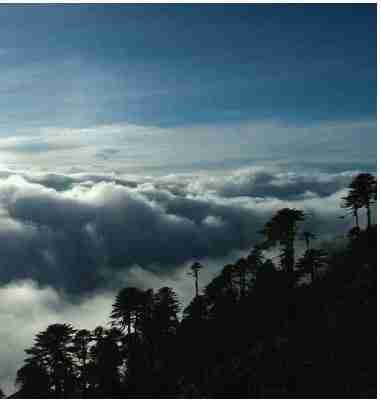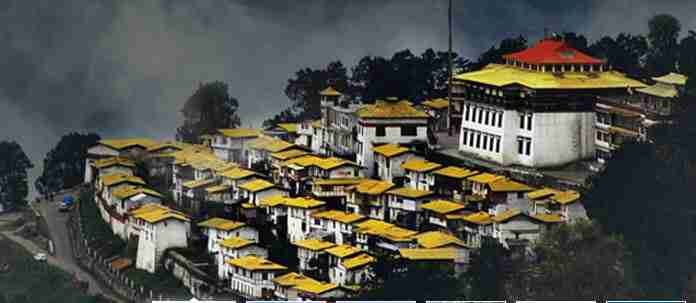I remember the first time I read a book on the Northeast by Dipti Bhalla Verma and Shiv Kunal Verma, was when I was visiting Mizoram in 2017 and staying with the Assam Rifles. After an excellent day in the Lushai Hills, I settled into my room and found their wonderful books on the ‘Assam Rifles’ and ‘3 Corps’ on the book shelf. It was a delight to go through these books which covered both the region and the forces and were arguably amongst the best ‘Coffee Table’ books and a departure from the conventional approach and usual run of the mill books. The present book of course has raised the bar considerably.
The first thing that strikes you when you pick up ‘Life and Culture in the NorthEast’ is the stunning photography which has captured the people and area in a manner seldom seen. The next thing that hits you is the fact that even after having lived in the North East, there is so little known about it and its people. That’s because we tend to club an entire region as the ‘North East’ whereas in reality there are so many differences within a region, and that’s what the authors have successfully brought to light.
Actually, there is little communities living in a particular area know about its other parts due to their geographical isolation. The book has therefore opened a window for its inhabitants to overcome regional identities and for the rest of us, to understand a region largely unchartered.
Capturing uniqueness
The Northeast is unique in many ways; land locked; it is the shortest distance in the subcontinent between the sea and the mountains, as a result it is packed with diverse flora and fauna and has a rich biodiversity. This narrow gap has also led to the most diversity as far as the people who inhabit it are concerned. Unlike other states, it shares over 90 % of its geographical boundaries with neighbouring countries to include Nepal, China, Bhutan, Myanmar and Bangladesh.

The Himalayas, which include Kanchenjunga, the third highest peak in the world, the mighty Brahmaputra, one of the world’s most majestic rivers and its tributaries, the Barak with its tributaries, plains of Assam with their verdant tea gardens, hills of Nagaland, Manipur, Mizoram and Meghalaya and heavily forested areas, all form part of the region.
One of the wonders of nature is how the mighty Yarlung Tsangpo, which originates North of the Himalayan watershed at the foothills of Mount Kailash, takes a mighty turn southwards after flowing eastwards, literally disappearing into the earth. It emerges as the Siang in Eastern Arunachal after cascading down the mountains and thereafter joining the Lohit at Sadiya, forms Brahmaputra and flows westwards across this region till it enters Bangladesh, West of the Garo Hills in Dhubri, Assam. Thereafter, joined by Teesta, it flows South into the Bay of Bengal as Meghna in Bangladesh.
The river is like a sea in places, has the largest inhabited river island in the world Majuli; and provides livelihood to millions. Its magnificence and diversity of its various sections and people have been beautifully captured. Incidentally, the origin of Siang and Brahmaputra was only known in the late 1880’s and the route was chartered by Captain Fredrick Bailey and Captain Henry Morshead in 1913. Their expedition has been covered, including mapping of the area which formed the basis for the McMahon line.
Life and culture of Northeast
‘Life and Culture in the Northeast’ has taken four years to write and involved over hundred visits, each over five days; which includes some of the most remote and impregnable areas. What emerged at the end of this commitment to the region is one of the most comprehensive and detailed books on the Northeast. Including Sikkim, which merged with India in 1975, with the seven sisters, and describing it as the ‘Gateway’ to this region,’ is logical. Incidentally, 35% of its area is covered by the Khangchendzonga National Park, the mind blowing images of which set the tone for what is to follow.
The book is laid out in ten chapters with each devoted to a state, except for Arunachal Pradesh which has three chapters covering, Western or Kameng, Central and Eastern Arunachal. Incidentally, no lateral movement is possible from one area to another due to the river valleys and lie of the ranges.
There are over 475 different ethnic groups speaking more than 400 languages in Northeast India.
The starting point of each chapter is a map to give a better understanding and thereafter it covers the history, terrain, important places, flora and fauna and its people to include various tribes, their colourful dresses, habitat, customs, culture and beliefs. There are amazing pictures to go with the vivid descriptions, capturing a very complex region which continues to remain unknown to most of us, in spite of the first rays of the sun falling in India at Kibithu, our Eastern most town with its mesmerising views of Lohit River.
Ethnicity is an aspect of Northeast, which is central to its 46 million inhabitants. There are over 475 different ethnic groups speaking more than 400 languages. Nagaland, Mizoram and Meghalaya are mainly Christian of which Mizoram is largely Presbyterian, while Nagaland is the only predominantly Baptist state in the world. Manipur has an equal mix of Meitei’s who are mainly Vaishnavite Hindus, and Nagas and Kukis who are Christians. Assam and Tripura are dominated by Hindus followed by Muslims, while Sikkim and Arunachal Pradesh both have a very high percentage of Buddhists and house sacred monasteries at Ramtek and Tawang respectively.
The history, customs, beliefs, traditions and lifestyle of these very diverse people is one of the threads that bind this narrative wonderfully. But tribal and regional identity while needing to be protected, nurtured and preserved must also be willing to embrace a national identity, which is being resisted by some. The irony remains that most visitors to Mizoram for example need an inner line permit whereas there is free movement allowed for a certain distance on both sides of the International Border.
Picture perfect
The images include some of the best portraits and stunning aerial photographs—a result of extensive helicopter photography, the like of which have not been seen earlier and have successfully captured every sinew of the region in a manner seldom seen. No corner of this region has been left out and no photographs taken from other sources which makes it special. The photographs are a work of art which have captured a world unknown to many.
Amongst their many achievements, Dipti and Kunal have produced what is considered the finest movie on the Indian Air Force. Kunal, is one of the foremost military historians and his book ‘1962 The War That Wasn’t’ has won widespread critical acclaim. They have written the ‘North East Trilogy’ which is a remarkable series. Once you have bound the wonderful images with a matching narrative, you have a labour of love and commitment which helps interpret the culture of its inhabitants.

You are taken on a fascinating journey and given an insight into an area, where few people have travelled so extensively. The book is strongly recommended to be read, as it helps understand a part of our country’s geography, heritage, culture and people about whom we need to know more.
For many, this is a mysterious land; the book has endeavoured to lift the veil of secrecy and capture its richness and feel its pulse. The authors have filled a knowledge gap as the average person tends to associate this area with agitations, insurgency and being under developed.
Their skill lies in their ability to compress a great amount of material into a book, without making it very lengthy while at the same time not leaving out essentials. Deepti and Kunal have successfully captured the essence and soul of the region with their rich prose and breathtaking imagery, and produced a book that needs to be treasured.
Life and Culture in Northeast India
Dipti Bhalla Verma, Shiv Kunal Verma, Abbeville Publishing Group,Price Rs 2950/- Hard Cover 260 pages


